Abulikemu Abuduweili
Deployable and Generalizable Motion Prediction: Taxonomy, Open Challenges and Future Directions
May 14, 2025



Abstract:Motion prediction, the anticipation of future agent states or scene evolution, is rooted in human cognition, bridging perception and decision-making. It enables intelligent systems, such as robots and self-driving cars, to act safely in dynamic, human-involved environments, and informs broader time-series reasoning challenges. With advances in methods, representations, and datasets, the field has seen rapid progress, reflected in quickly evolving benchmark results. Yet, when state-of-the-art methods are deployed in the real world, they often struggle to generalize to open-world conditions and fall short of deployment standards. This reveals a gap between research benchmarks, which are often idealized or ill-posed, and real-world complexity. To address this gap, this survey revisits the generalization and deployability of motion prediction models, with an emphasis on the applications of robotics, autonomous driving, and human motion. We first offer a comprehensive taxonomy of motion prediction methods, covering representations, modeling strategies, application domains, and evaluation protocols. We then study two key challenges: (1) how to push motion prediction models to be deployable to realistic deployment standards, where motion prediction does not act in a vacuum, but functions as one module of closed-loop autonomy stacks - it takes input from the localization and perception, and informs downstream planning and control. 2) how to generalize motion prediction models from limited seen scenarios/datasets to the open-world settings. Throughout the paper, we highlight critical open challenges to guide future work, aiming to recalibrate the community's efforts, fostering progress that is not only measurable but also meaningful for real-world applications.
Enhancing Sample Generation of Diffusion Models using Noise Level Correction
Dec 07, 2024



Abstract:The denoising process of diffusion models can be interpreted as a projection of noisy samples onto the data manifold. Moreover, the noise level in these samples approximates their distance to the underlying manifold. Building on this insight, we propose a novel method to enhance sample generation by aligning the estimated noise level with the true distance of noisy samples to the manifold. Specifically, we introduce a noise level correction network, leveraging a pre-trained denoising network, to refine noise level estimates during the denoising process. Additionally, we extend this approach to various image restoration tasks by integrating task-specific constraints, including inpainting, deblurring, super-resolution, colorization, and compressed sensing. Experimental results demonstrate that our method significantly improves sample quality in both unconstrained and constrained generation scenarios. Notably, the proposed noise level correction framework is compatible with existing denoising schedulers (e.g., DDIM), offering additional performance improvements.
Revisiting the Initial Steps in Adaptive Gradient Descent Optimization
Dec 03, 2024



Abstract:Adaptive gradient optimization methods, such as Adam, are prevalent in training deep neural networks across diverse machine learning tasks due to their ability to achieve faster convergence. However, these methods often suffer from suboptimal generalization compared to stochastic gradient descent (SGD) and exhibit instability, particularly when training Transformer models. In this work, we show the standard initialization of the second-order moment estimation ($v_0 =0$) as a significant factor contributing to these limitations. We introduce simple yet effective solutions: initializing the second-order moment estimation with non-zero values, using either data-driven or random initialization strategies. Empirical evaluations demonstrate that our approach not only stabilizes convergence but also enhances the final performance of adaptive gradient optimizers. Furthermore, by adopting the proposed initialization strategies, Adam achieves performance comparable to many recently proposed variants of adaptive gradient optimization methods, highlighting the practical impact of this straightforward modification.
Robustifying Long-term Human-Robot Collaboration through a Hierarchical and Multimodal Framework
Nov 24, 2024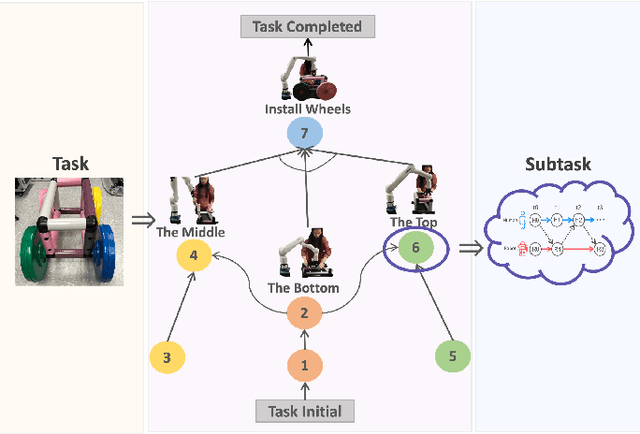
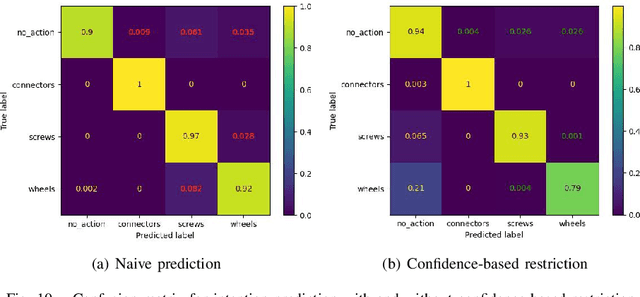
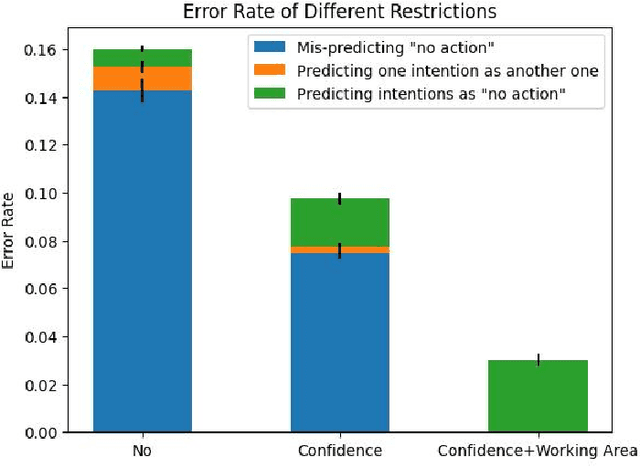
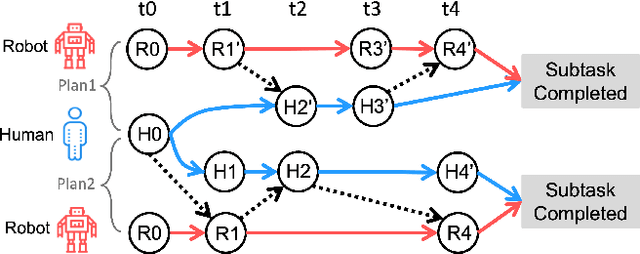
Abstract:Long-term Human-Robot Collaboration (HRC) is crucial for developing flexible manufacturing systems and for integrating companion robots into daily human environments over extended periods. However, sustaining such collaborations requires overcoming challenges such as accurately understanding human intentions, maintaining robustness in noisy and dynamic environments, and adapting to diverse user behaviors. This paper presents a novel multimodal and hierarchical framework to address these challenges, facilitating efficient and robust long-term HRC. In particular, the proposed multimodal framework integrates visual observations with speech commands, which enables intuitive, natural, and flexible interactions between humans and robots. Additionally, our hierarchical approach for human detection and intention prediction significantly enhances the system's robustness, allowing robots to better understand human behaviors. The proactive understanding enables robots to take timely and appropriate actions based on predicted human intentions. We deploy the proposed multimodal hierarchical framework to the KINOVA GEN3 robot and conduct extensive user studies on real-world long-term HRC experiments. The results demonstrate that our approach effectively improves the system efficiency, flexibility, and adaptability in long-term HRC, showcasing the framework's potential to significantly improve the way humans and robots work together.
Continual Learning and Lifting of Koopman Dynamics for Linear Control of Legged Robots
Nov 21, 2024Abstract:The control of legged robots, particularly humanoid and quadruped robots, presents significant challenges due to their high-dimensional and nonlinear dynamics. While linear systems can be effectively controlled using methods like Model Predictive Control (MPC), the control of nonlinear systems remains complex. One promising solution is the Koopman Operator, which approximates nonlinear dynamics with a linear model, enabling the use of proven linear control techniques. However, achieving accurate linearization through data-driven methods is difficult due to issues like approximation error, domain shifts, and the limitations of fixed linear state-space representations. These challenges restrict the scalability of Koopman-based approaches. This paper addresses these challenges by proposing a continual learning algorithm designed to iteratively refine Koopman dynamics for high-dimensional legged robots. The key idea is to progressively expand the dataset and latent space dimension, enabling the learned Koopman dynamics to converge towards accurate approximations of the true system dynamics. Theoretical analysis shows that the linear approximation error of our method converges monotonically. Experimental results demonstrate that our method achieves high control performance on robots like Unitree G1/H1/A1/Go2 and ANYmal D, across various terrains using simple linear MPC controllers. This work is the first to successfully apply linearized Koopman dynamics for locomotion control of high-dimensional legged robots, enabling a scalable model-based control solution.
Estimating Neural Network Robustness via Lipschitz Constant and Architecture Sensitivity
Oct 30, 2024Abstract:Ensuring neural network robustness is essential for the safe and reliable operation of robotic learning systems, especially in perception and decision-making tasks within real-world environments. This paper investigates the robustness of neural networks in perception systems, specifically examining their sensitivity to targeted, small-scale perturbations. We identify the Lipschitz constant as a key metric for quantifying and enhancing network robustness. We derive an analytical expression to compute the Lipschitz constant based on neural network architecture, providing a theoretical basis for estimating and improving robustness. Several experiments reveal the relationship between network design, the Lipschitz constant, and robustness, offering practical insights for developing safer, more robust robot learning systems.
WeHelp: A Shared Autonomy System for Wheelchair Users
Sep 19, 2024

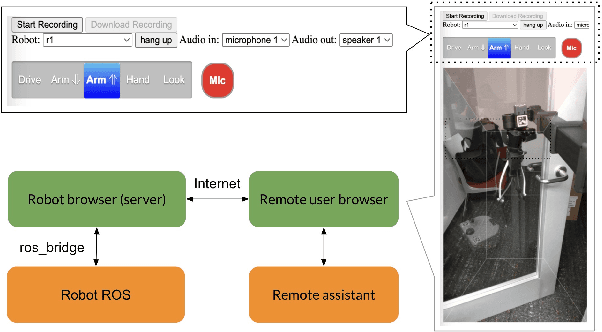

Abstract:There is a large population of wheelchair users. Most of the wheelchair users need help with daily tasks. However, according to recent reports, their needs are not properly satisfied due to the lack of caregivers. Therefore, in this project, we develop WeHelp, a shared autonomy system aimed for wheelchair users. A robot with a WeHelp system has three modes, following mode, remote control mode and tele-operation mode. In the following mode, the robot follows the wheelchair user automatically via visual tracking. The wheelchair user can ask the robot to follow them from behind, by the left or by the right. When the wheelchair user asks for help, the robot will recognize the command via speech recognition, and then switch to the teleoperation mode or remote control mode. In the teleoperation mode, the wheelchair user takes over the robot with a joy stick and controls the robot to complete some complex tasks for their needs, such as opening doors, moving obstacles on the way, reaching objects on a high shelf or on the low ground, etc. In the remote control mode, a remote assistant takes over the robot and helps the wheelchair user complete some complex tasks for their needs. Our evaluation shows that the pipeline is useful and practical for wheelchair users. Source code and demo of the paper are available at \url{https://github.com/Walleclipse/WeHelp}.
KOROL: Learning Visualizable Object Feature with Koopman Operator Rollout for Manipulation
Jun 29, 2024Abstract:Learning dexterous manipulation skills presents significant challenges due to complex nonlinear dynamics that underlie the interactions between objects and multi-fingered hands. Koopman operators have emerged as a robust method for modeling such nonlinear dynamics within a linear framework. However, current methods rely on runtime access to ground-truth (GT) object states, making them unsuitable for vision-based practical applications. Unlike image-to-action policies that implicitly learn visual features for control, we use a dynamics model, specifically the Koopman operator, to learn visually interpretable object features critical for robotic manipulation within a scene. We construct a Koopman operator using object features predicted by a feature extractor and utilize it to auto-regressively advance system states. We train the feature extractor to embed scene information into object features, thereby enabling the accurate propagation of robot trajectories. We evaluate our approach on simulated and real-world robot tasks, with results showing that it outperformed the model-based imitation learning NDP by 1.08$\times$ and the image-to-action Diffusion Policy by 1.16$\times$. The results suggest that our method maintains task success rates with learned features and extends applicability to real-world manipulation without GT object states.
Proactive Human-Robot Co-Assembly: Leveraging Human Intention Prediction and Robust Safe Control
Jun 20, 2023



Abstract:Human-robot collaboration (HRC) is one key component to achieving flexible manufacturing to meet the different needs of customers. However, it is difficult to build intelligent robots that can proactively assist humans in a safe and efficient way due to several challenges.First, it is challenging to achieve efficient collaboration due to diverse human behaviors and data scarcity. Second, it is difficult to ensure interactive safety due to uncertainty in human behaviors. This paper presents an integrated framework for proactive HRC. A robust intention prediction module, which leverages prior task information and human-in-the-loop training, is learned to guide the robot for efficient collaboration. The proposed framework also uses robust safe control to ensure interactive safety under uncertainty. The developed framework is applied to a co-assembly task using a Kinova Gen3 robot. The experiment demonstrates that our solution is robust to environmental changes as well as different human preferences and behaviors. In addition, it improves task efficiency by approximately 15-20%. Moreover, the experiment demonstrates that our solution can guarantee interactive safety during proactive collaboration.
General Place Recognition Survey: Towards the Real-world Autonomy Age
Sep 09, 2022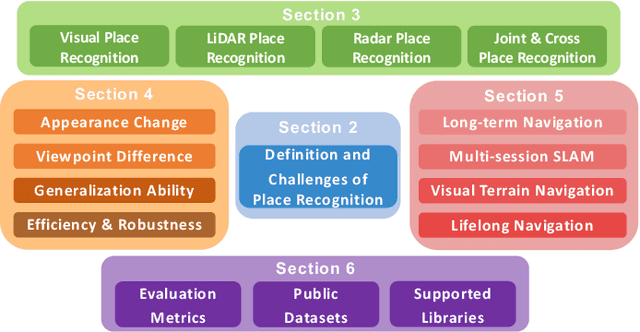
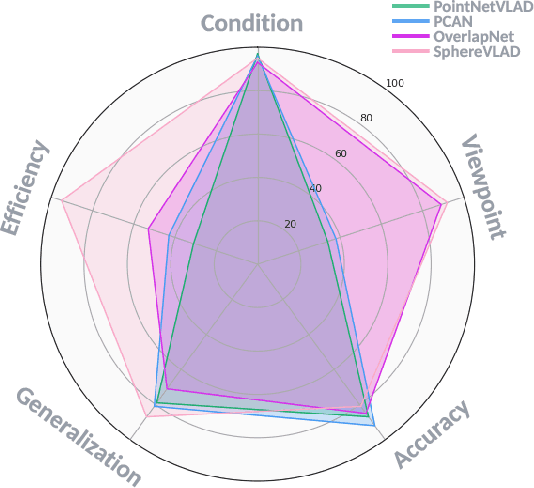


Abstract:Place recognition is the fundamental module that can assist Simultaneous Localization and Mapping (SLAM) in loop-closure detection and re-localization for long-term navigation. The place recognition community has made astonishing progress over the last $20$ years, and this has attracted widespread research interest and application in multiple fields such as computer vision and robotics. However, few methods have shown promising place recognition performance in complex real-world scenarios, where long-term and large-scale appearance changes usually result in failures. Additionally, there is a lack of an integrated framework amongst the state-of-the-art methods that can handle all of the challenges in place recognition, which include appearance changes, viewpoint differences, robustness to unknown areas, and efficiency in real-world applications. In this work, we survey the state-of-the-art methods that target long-term localization and discuss future directions and opportunities. We start by investigating the formulation of place recognition in long-term autonomy and the major challenges in real-world environments. We then review the recent works in place recognition for different sensor modalities and current strategies for dealing with various place recognition challenges. Finally, we review the existing datasets for long-term localization and introduce our datasets and evaluation API for different approaches. This paper can be a tutorial for researchers new to the place recognition community and those who care about long-term robotics autonomy. We also provide our opinion on the frequently asked question in robotics: Do robots need accurate localization for long-term autonomy? A summary of this work and our datasets and evaluation API is publicly available to the robotics community at: https://github.com/MetaSLAM/GPRS.
 Add to Chrome
Add to Chrome Add to Firefox
Add to Firefox Add to Edge
Add to Edge